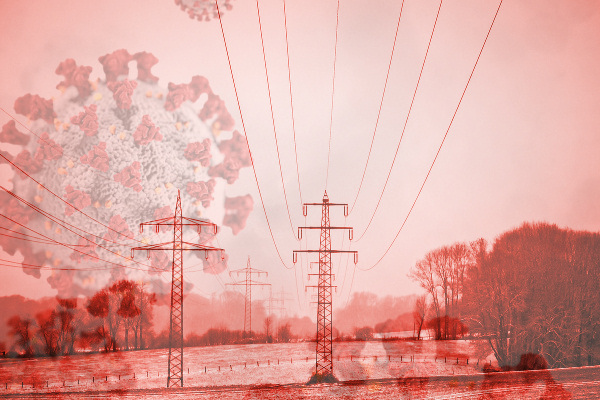Coping with the impact of COVID-19 in the electricity sector
Published on 10th June, 2020
The business of operating as an electricity supplier in the industrial and commercial market has largely continued without interruption despite the lockdown imposed by the Government in late March. Since then, the true impact of COVID-19 on the electricity sector has become a little clearer although the lasting effects of what has been happening will take some time to emerge.
The economic and commercial effects of the virus were felt very quickly in the form of a major loss of customer consumption. Closure of businesses, schools and many factories, combined with the suspension of nearly all forms of travel except for emergency workers, led to a 15-20% fall in electricity demand and a number of follow-on consequences.

Loss of demand led to a 50% fall in the wholesale price of electricity. Co-incidentally, the timing of the lockdown has aligned with a period of exceptionally dry weather and higher than normal temperatures – leading to record levels of renewables power generation on the system (principally solar and wind). At one stage prices fell so low that extended periods of negative system prices were experienced, although there has been a limited recovery in pricing levels as lockdown conditions have started to be eased.
We can look at how these sudden and dramatic changes have affected trading conditions for the electricity sector from three perspectives:
- Financial & Commercial
- System Operation
- Regulation
Financial & Commercial
The impact of these changes on different electricity players depends on their position or role in the sector. In general, it would be expected that suppliers and consumers would benefit from lower prices at the expense of power generators – but much will depend on individual contracting and hedging strategies.
Suppliers with short term purchasing strategies, who might normally face the risk of an exposure to higher than expected purchasing costs and fixed customer price tariffs, may now enjoy the prospect of a windfall gain from lower purchase costs. On the other hand, some suppliers will be locked into longer term purchase contracts than they would now like and may also have a portfolio of customers who are either more incentivised to switch to cheaper alternatives and/or can no longer pay their bills because of loss of household income.
On the other hand, power generators are now the owners of assets which are potentially only half as valuable as they were at the beginning of the year and investors in generation will be thinking twice about investment plans. There is accumulating evidence about the dampening effect of the virus throughout the world on investment in power generation, both renewable and non-renewable. As economies begin to recover from the initial shock of the pandemic, prices will at some stage make a comeback but there is much uncertainty about the pace of recovery and whether there will be permanent scarring effects on future investment in the sector.
System Operation
The ability of the system operator (National Grid) to keep the lights on in the face of these unprecedented shocks looks like a success story. Historically, debate about the resilience of the electricity system has focused on whether there is enough of the right kind of generation to meet demand at periods of peak demand in winter.
Meeting the new low levels of demand while maintaining system stability and against the background of growing renewables capacity presents a very new and different challenge. For some time now, maintaining “inertia” on the system by having enough synchronous plant operating has been getting more difficult. In one of a number of responses the system operator has taken steps recently to increase its powers to require smaller scale distributed generators to stop generating altogether in order to help resolve this problem.
Similarly, some suppliers have been offering to pay customers to take power at certain times in order to preserve their position in the generation mix. It is unclear whether this will remain as an underlying structural problem or one that will prove to be temporary.
Regulation
Throughout this challenging time, the focus of the energy sector Regulator has rightly been on the protection of domestic customers from the possible consequences of the pandemic. Accordingly, suppliers have been asked to show flexibility in their provision of services to customers, particularly those who may be experiencing financial difficulties.
All supplier licence obligations have remained fully in place, but the Regulator has stated that they will be viewed “more flexibly” in the event of any non-compliance due to the unusual circumstances.
The adverse financial consequences of the fall in wholesale prices on some supplier cash flows has also been acknowledged, up to a point, with a scheme to enable suppliers to defer payment of distribution charges until the end of the current financial year having recently been agreed with the Distribution Network Companies.
Not surprisingly, the virus has also led to significant delays in important industry programmes such as the Faster Switching Programme and other regulatory changes.
In summary, significant virus-induced impacts are being felt across the sector but how they play out and whether they leave any enduring legacy remain open questions at this stage. For the moment, let’s call it a kind of “mid-term report” with more to come later this year when all the results are in.
EnDCo provides independent and transparent access to the wholesale electricity market for independent generators and consumers. Our services include helping our customers to optimise their financial position taking account of their assets and market opportunities.
For further information, please email me at: les.abbie@endco.co.uk
Les Abbie, CEO, EnDCo


 REPORTS
REPORTS 

